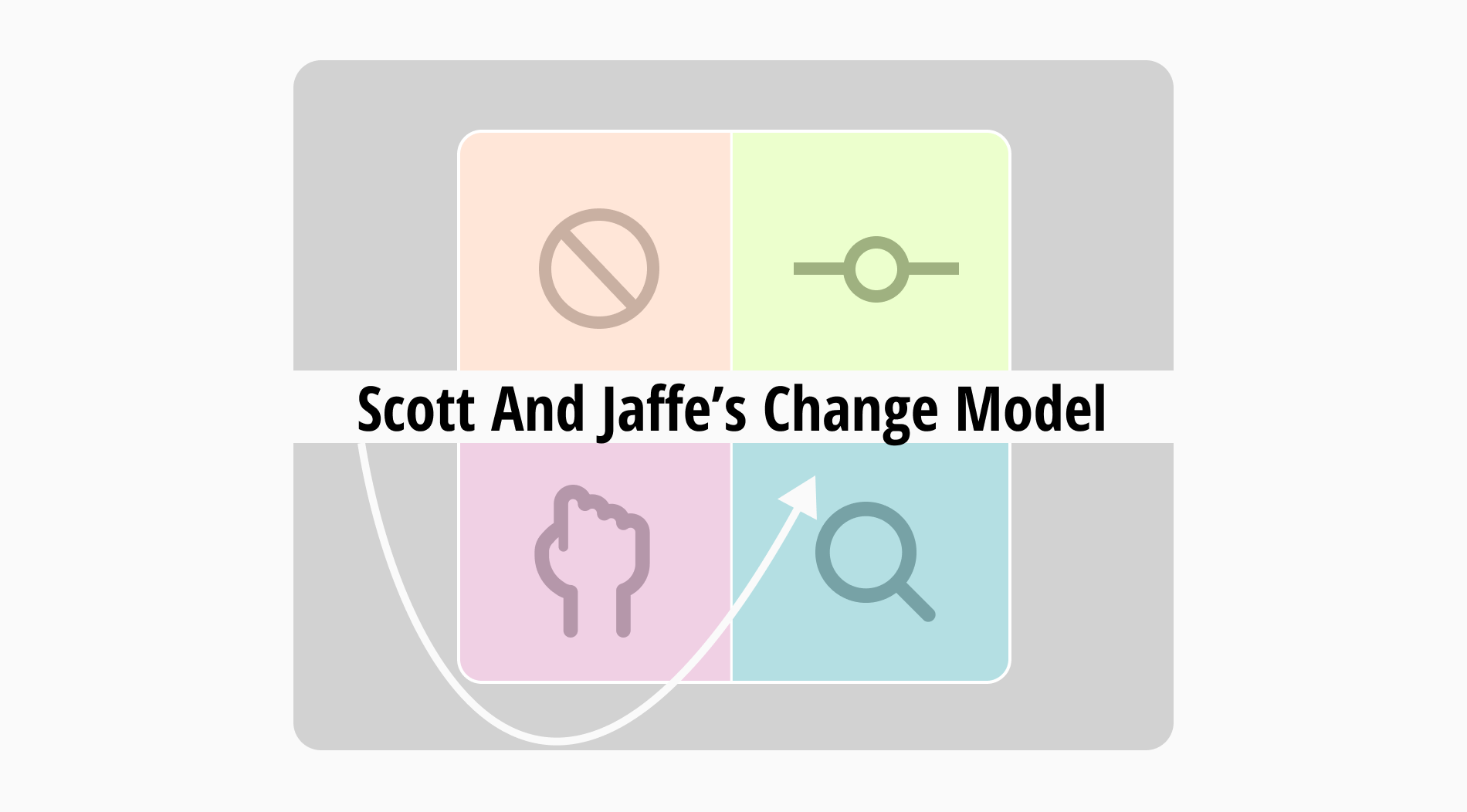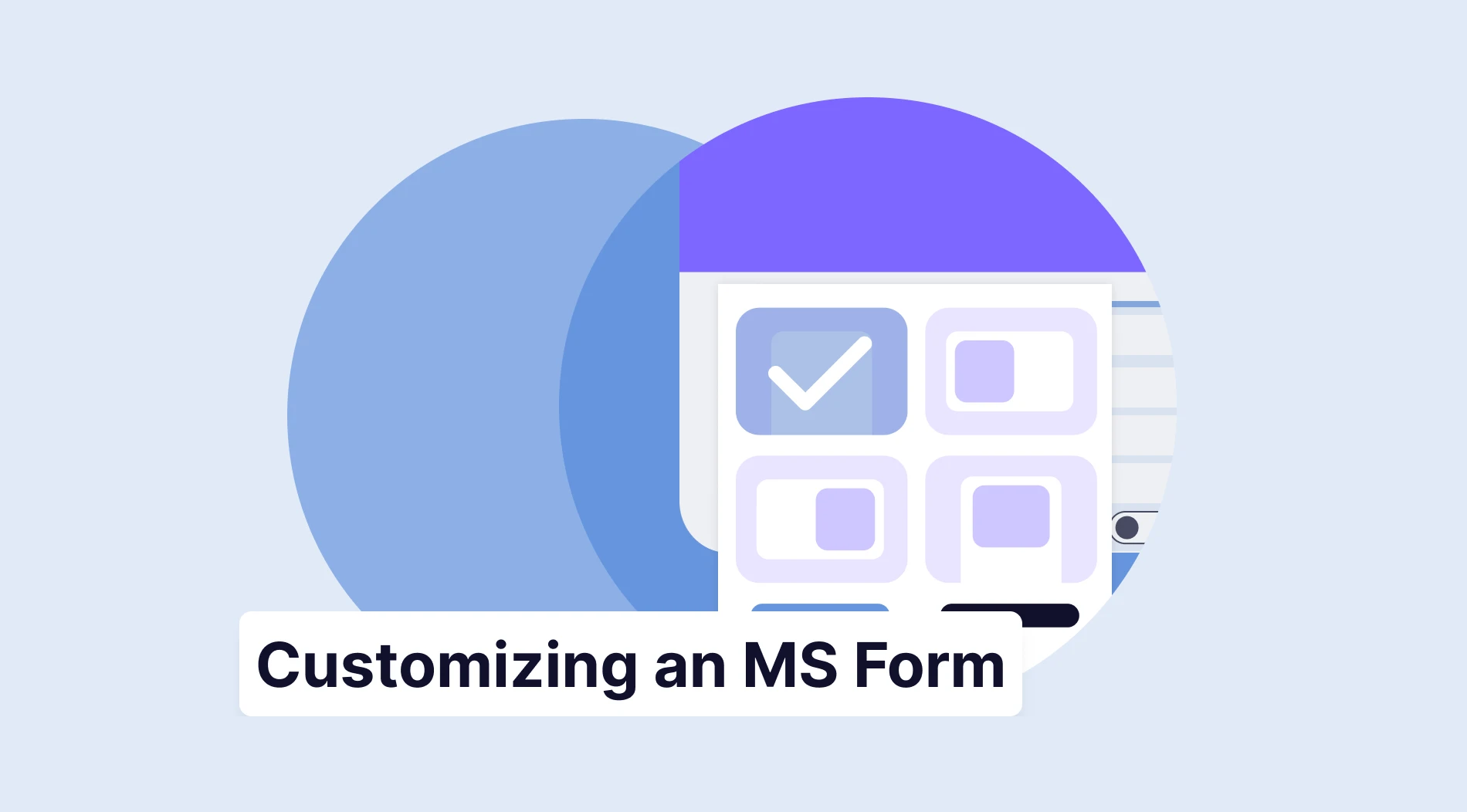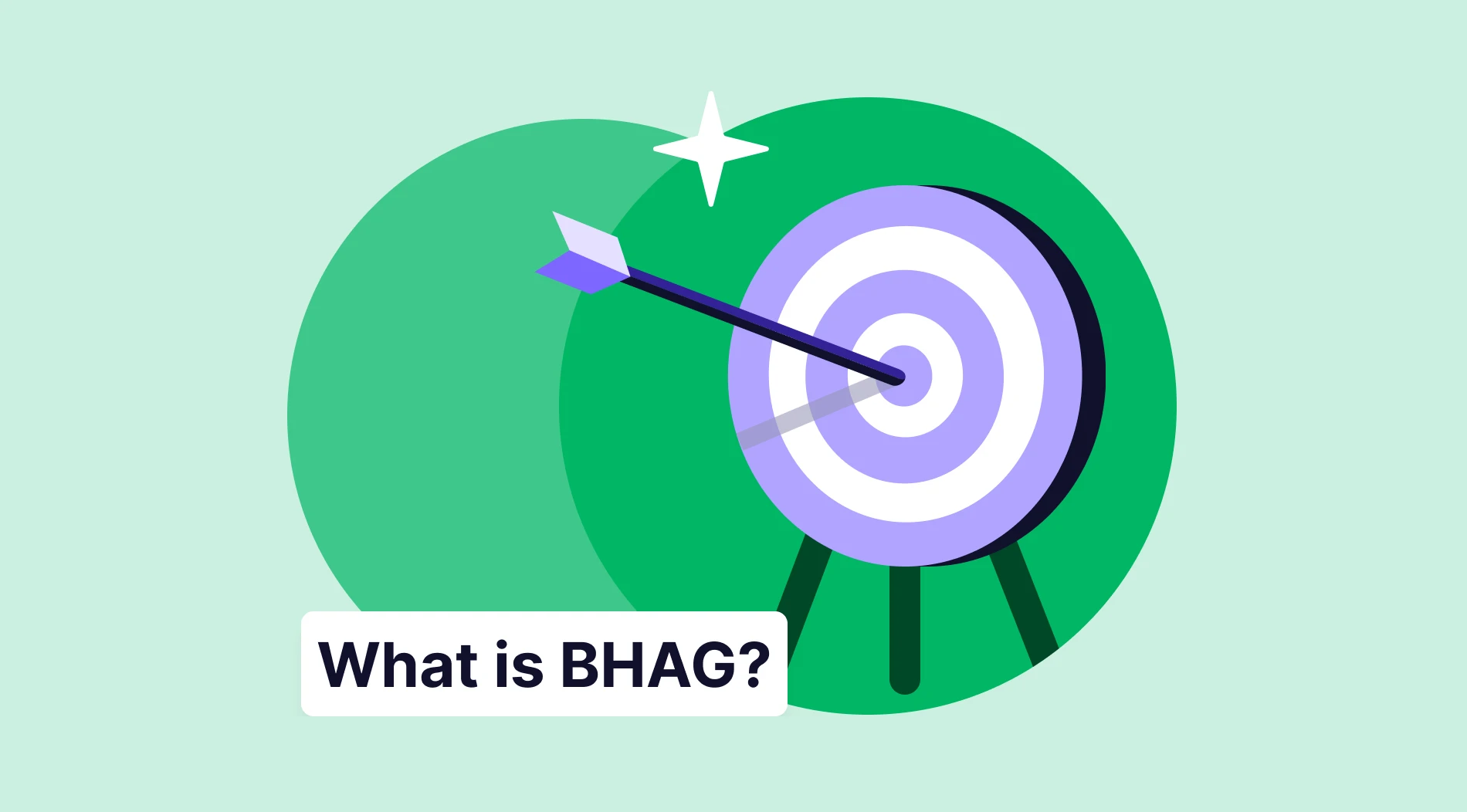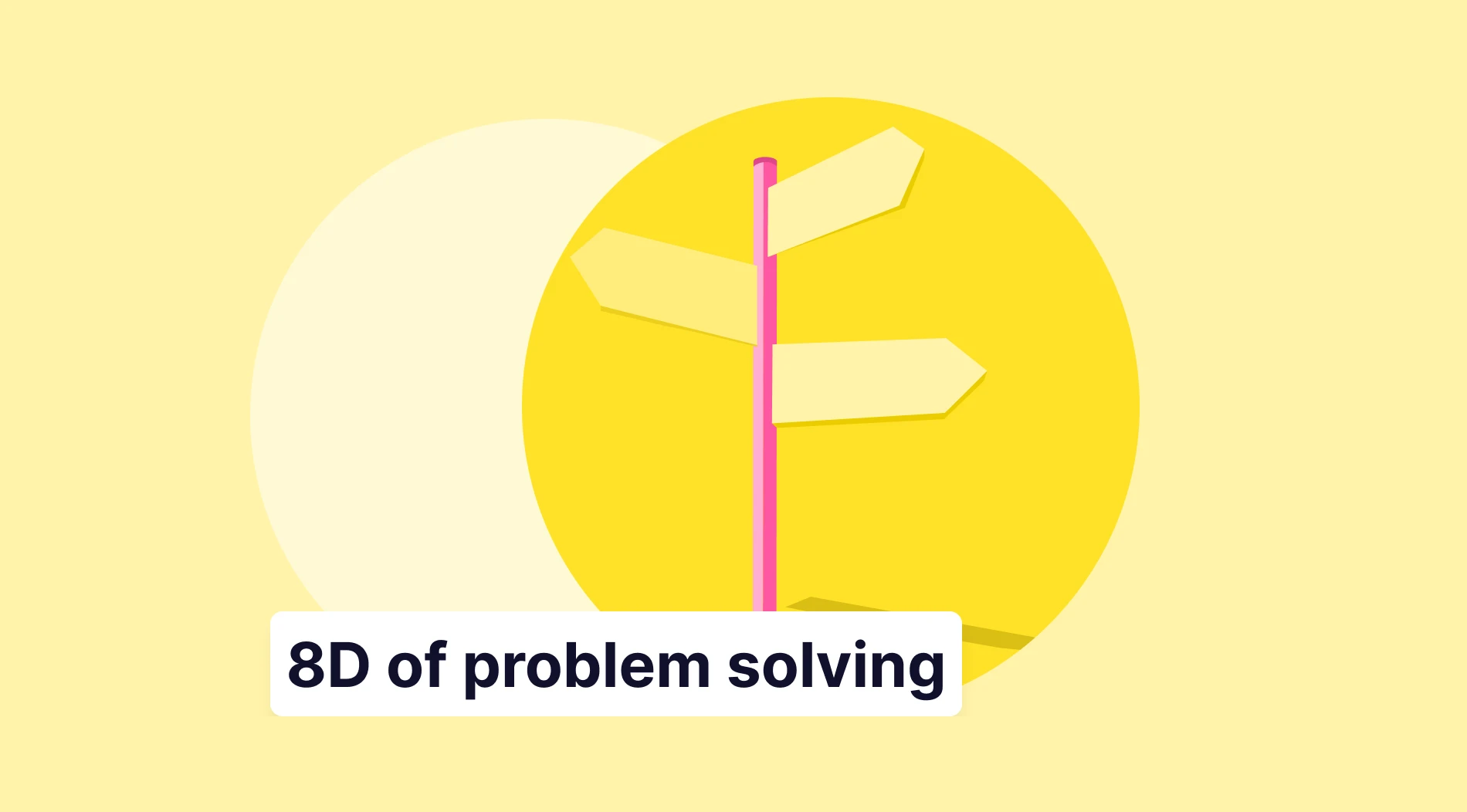In today's rapidly evolving business landscape, staying ahead of the curve is essential for organizational success. Theoretical frameworks for organizational change serve as guiding lights amidst uncertainty, providing businesses with structured approaches to navigate transitions effectively. From addressing technological advancements to responding to shifting consumer demands, they offer invaluable insights and strategies to adapt and innovate for organizational change.
Today, we will explore Scott and Jaffe’s Change Model. It is a tool empowering businesses to navigate the turbulence of organizational transformation with purpose. In this article, we'll delve deep into its mechanisms, uncovering its potential to drive lasting change. Additionally, we'll uncover its advantages and address frequently asked questions, enabling you to use the model effectively.
What is Scott and Jaffe’s change model?
Cynthia Scott and Dennis Jaffe developed the Change model in the 1980s. It offers a systematic approach to organizational transformation, consisting of four stages.
These phases include Denial, Resistance, Exploration and Commitment. This model enhances decision-making, communication, and organizational resilience, promoting adaptability and sustainable growth within businesses. It also highlights the focuses which individuals may have during change:External Focus on Environment, Focus on Past, Focus on Future and Internal Focus on Self.
Scott and Jaffe’s change model: Main components
Scott and Jaffe’s model suggest that organizational changes are subject to four main stages. These stages apply to individuals as well. Let’s dive into those stages and explore the four main components of Scott and Jaffe’s change model in detail.
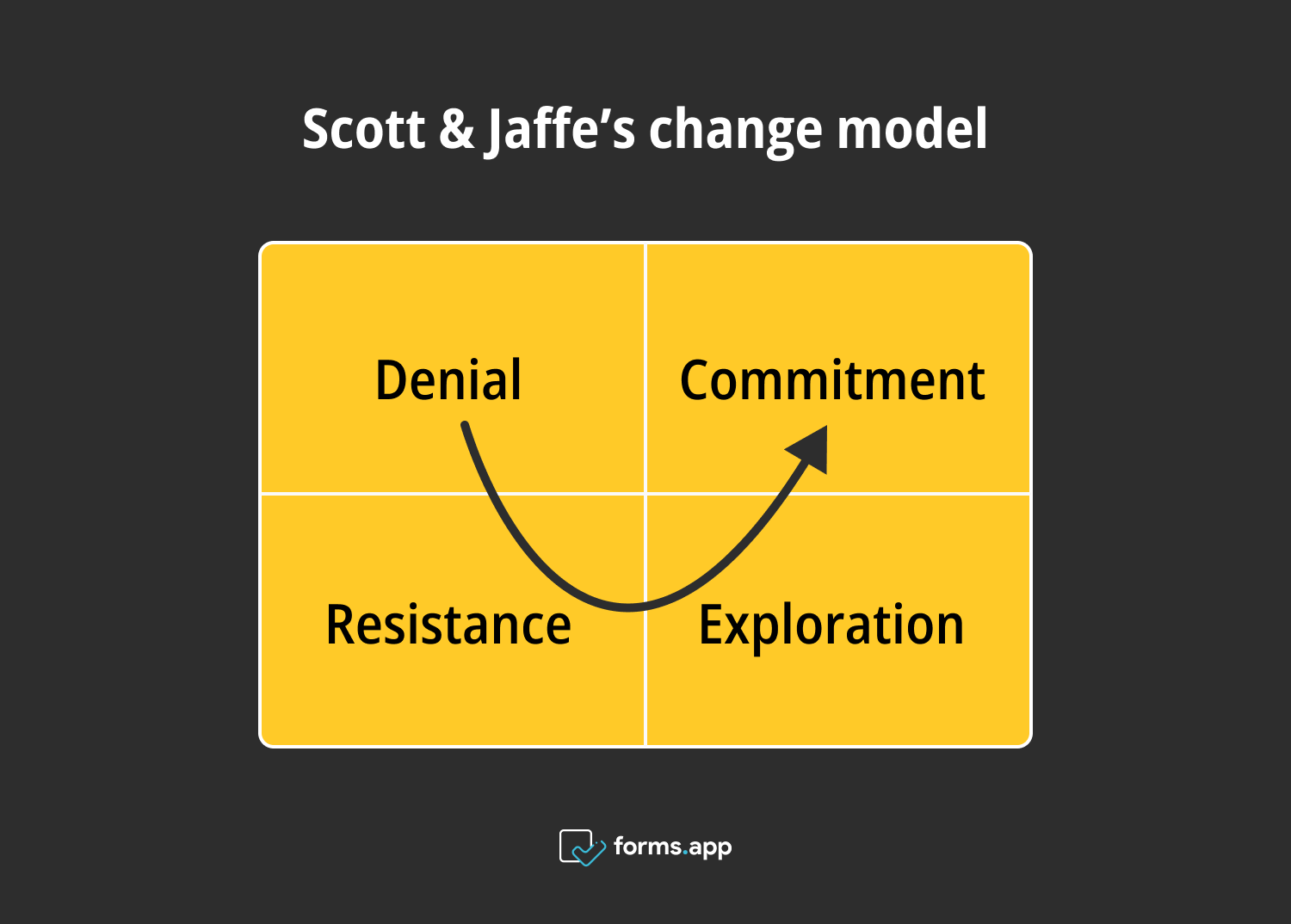
Scott and Jaffe’s change model
1- Denial
Denial is the stage where individuals do not recognize or accept the need for change. They might be unaware of the changes happening around them or choose to ignore them. This stage also involves disbelief in change. Managers in the company may avoid discussing the change or refuse to acknowledge its potential impact.
Overcoming denial requires clear communication about the necessity and benefits of the change.
2- Resistance
Resistance occurs when organizations start to acknowledge the change but oppose it. This stage involves fear, anger, frustration, and skepticism. People may resist because they fear the unknown and feel insecure about their abilities. They might also feel concerned about the potential negative impacts of the change on their roles. Active resistance can include vocal opposition or reduced productivity.
Managing resistance involves listening to concerns, providing support, addressing fears, and involving individuals in the change process. This helps you foster a sense of ownership and control.
3- Exploration
Exploration is the stage where individuals begin to experience new ways. They start to explore the benefits and possibilities of the change and show curiosity for learning. This stage involves shifting from resistance to a possible acceptance. People in your company may seek more information, ask questions, and try new practices.
Encouraging exploration involves offering training, resources, and opportunities for individuals to learn without fear of failure. This also helps your teammates to build confidence in the new system or process.
4- Commitment
Commitment is our final stage where employees fully accept and integrate the change into their daily routines. They understand and embrace the benefits of the change and show increased confidence and competence. This stage involves a sense of ownership and dedication to the change. Here, employees become the defenders of the new way of doing things.
Sustaining commitment requires dynamic support and recognition of achievements. Celebrating success and engaging individuals ensures that the change becomes a permanent part of your organizational culture.
Scott and Jaffe’s Change Model: Different Focuses
Scott and Jaffe’s change model also offers different focuses that the individuals may have during the change: External Focus on the Environment, Focus on the Past, Focus on the Future, and Internal Focus on Self. Let’s take a look at them briefly to understand the other aspects of this comprehensive change model:
- External Focus on Environment: In this focus, people look at how competitors, market trends, and changes impact the organization. Understanding the external environment helps you recognize the need for change and its benefits or pitfalls. This awareness can help move people from denial to acceptance.
- Internal Focus on Self: With an internal focus on self, people may consider how the change will personally affect them. This may cause anxiety and resistance if individuals feel threatened or unprepared for the change. Addressing this focus involves providing support and clear communication.
- Focus on the Past: When employees focus on the past, they think about how things used to be and compare previous successes with current changes. This focus can lead to resistance as some people might feel nostalgic or believe that old ways were better. You may need to point out why the change is necessary in the future.
- Focus on the Future: This focus involves looking ahead and reflecting on the potential outcomes of the change. Your employees who focus on the future are more likely to engage in the exploration phase. They see the opportunities that the change can bring to increase efficiency.
How to Conduct Scott and Jaffe’s Change Model
Scott and Jaffe's change model outlines a systematic approach to organizational change. Here, we will offer six key steps to successfully implement it. These steps typically include diagnosing the need for change, setting objectives, developing an action plan, implementing changes, monitoring progress, and finally, institutionalizing the changes to ensure long-term sustainability and integration within the organization.
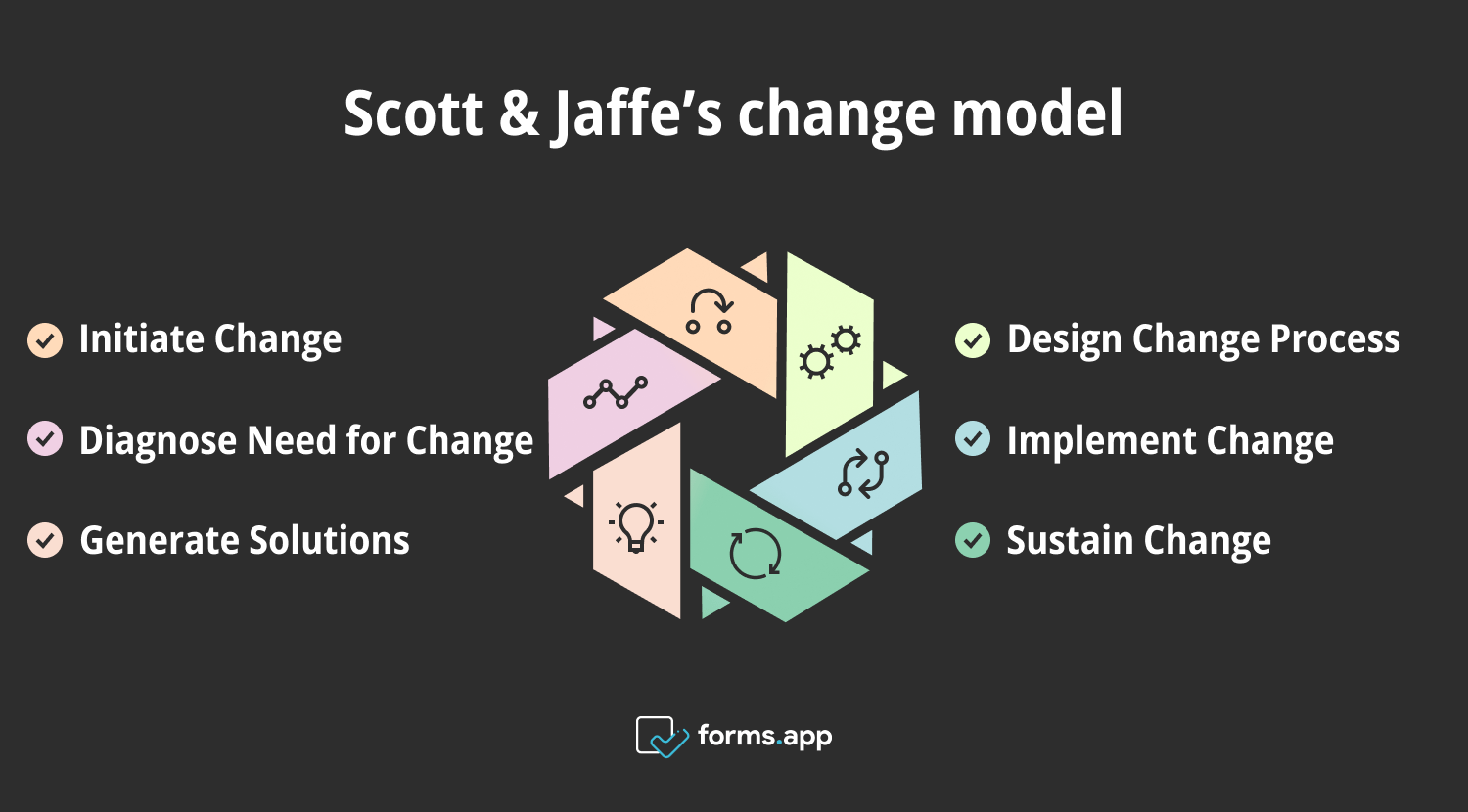
Scott and Jaffe’s Change Model
1- Initiate Change
The first step is the beginning of the change process. The organizations recognize the need for change and establish a vision to inspire stakeholders. It involves gaining leadership support and communicating the rationale for change. Organizations may initiate change in response to emerging technologies or evolving customer expectations.
Example: Think of the retail industry. A leading department store starts change by recognizing the growing trend of online shopping and shifting consumer preferences. It acknowledges the need to adapt to changing conditions.
It can communicate the importance of embracing e-commerce strategies. It can now invest in digital change initiatives to remain competitive in the market.
2- Diagnose Need for Change
The second step involves conducting a comprehensive analysis of existing processes and structures to identify areas for improvement. This stage involves gathering data, soliciting feedback from stakeholders, and diagnosing the root causes of organizational challenges. Organizations may diagnose the need for change through various methods, including surveys, focus groups, and performance evaluations.
Example: A technology firm may diagnose the need for change by assessing its current software development and project management. It identifies bottlenecks and communication gaps within. It can pinpoint areas for improvement and develop targeted solutions to enhance productivity and collaboration among teams.
3- Generate Solutions
Generate Solutions focuses on brainstorming and evaluating potential solutions to address identified challenges. This stage encourages creativity, collaboration, and innovation to develop practical strategies that align with organizational goals and objectives. Organizations may generate solutions through cross-functional workshops, design thinking sessions, and idea-generation forums.
Example: A healthcare provider may generate solutions to improve patient care quality and reduce hospital readmission rates. It gathers multi-disciplinary teams comprising healthcare professionals, administrators, and patient advocates. The organization can brainstorm innovative approaches. These include implementing telemedicine services, enhancing discharge planning protocols, and implementing patient education initiatives to promote self-care and adherence to treatment plans.
4- Design Change Process
The design Change Process involves crafting a detailed plan. The plan outlines the implementation strategy, timeline, and resource allocation required for successful change execution. This stage requires careful consideration of logistical factors, stakeholder engagement, and risk management. Organizations may design the change process through project management methodologies, change management frameworks, and stakeholder analysis techniques.
Example: A financial institution may design the change process to implement a new customer relationship management (CRM) system. This involves developing a project plan that outlines key milestones, outcomes, and dependencies. It also includes allocating resources, defining roles and responsibilities, and establishing communication channels to ensure transparency and accountability throughout the implementation process.
5- Implement Change
Implement Change marks the actual execution of the proposed solutions and strategies. This stage requires effective communication, stakeholder engagement, and project management to ensure a smooth transition and adoption of new practices. Organizations may implement change through pilot programs, phased rollouts, and training initiatives. This helps minimize disruption and maximize employee buy-in.
Example: A manufacturing company may implement change by transitioning to lean manufacturing principles to improve business efficiency and reduce waste. This involves redefining production processes, training employees on new workflows and methodologies. It enables implementing performance metrics to track progress and measure the impact of change initiatives on key performance indicators.
6-Sustain Change
Sustain Change focuses on reinforcing the new behaviors, practices, and systems introduced during the change process. This ensures long-term success and organizational resilience. This stage requires ongoing monitoring, evaluation, and adaptation to embed change into the organizational culture and mitigate the risk of regression. Organizations may sustain change through performance management systems, recognition programs, and continuous improvement initiatives.
Example: A company may sustain change by promoting a culture of customer-centricity and service excellence among employees. This involves providing ongoing training and development opportunities and recognizing and rewarding employees for demonstrating desired behaviors. The company fosters a culture of continuous learning and improvement. This helps maintain its competitive edge and adapt to evolving market trends and customer preferences.
Advantages of the model
Scott and Jaffe's Change Model offers several advantages that empower organizations to navigate change effectively. The model has a systematic approach. It involves effective communication and stakeholder engagement to promote adaptability, resilience, and strategic decision-making.
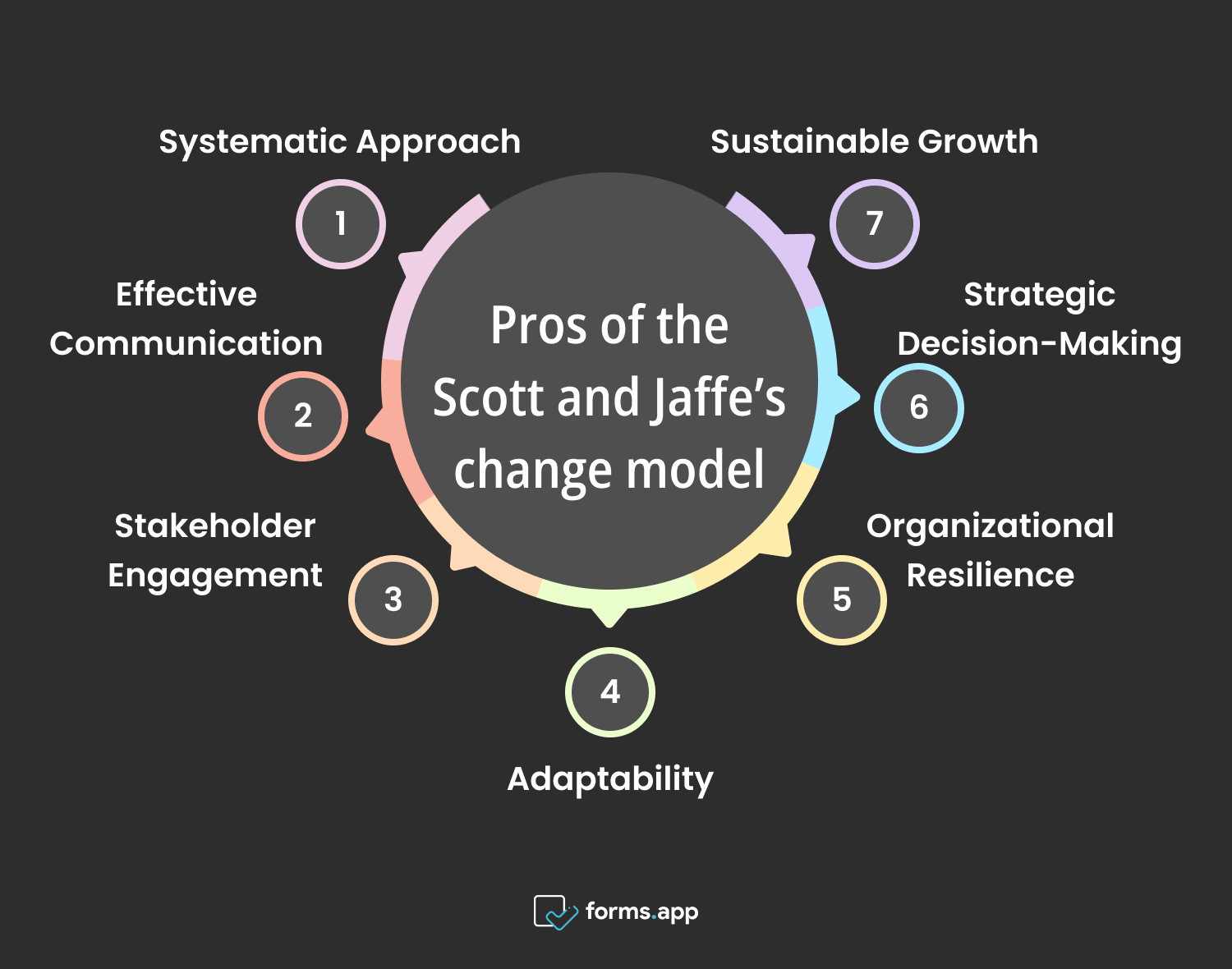
Reasons to use Scott and Jaffe’s change model
This model equips businesses with the tools they need for sustainable growth. Let's examine each advantage in detail to uncover its significance in driving organizational change:
Systematic Approach
Scott and Jaffe's Change Model offers a systematic and structured approach to managing organizational change. By breaking down the change process into distinct stages, it provides clarity and guidance. This systematic approach enables organizations to navigate complex change initiatives more effectively, minimizing confusion and maximizing efficiency throughout the process.
Effective Communication
Effective communication is essential for successful change management, and Scott and Jaffe's model emphasizes this aspect. By promoting clear and transparent communication channels, the model ensures that stakeholders remain informed and engaged. This fosters a sense of trust and collaboration, enabling smoother transitions and reducing resistance to change.
Stakeholder Engagement
Involving key stakeholders in the change process is critical for generating support for change initiatives. Scott and Jaffe's model strongly emphasizes stakeholder engagement. It encourages organizations to actively involve employees, leaders, and other relevant parties in decision-making and implementation. This fosters a sense of ownership and commitment, increasing the likelihood of successful change outcomes.
Adaptability
Change is inevitable, and organizations must be able to adapt to evolving circumstances to remain competitive. Scott and Jaffe's model promotes adaptability by encouraging organizations to remain flexible and responsive throughout the change process. This enables them to adjust their strategies and tactics as needed. It also ensures that change initiatives align with shifting market conditions and business priorities.
Organizational Resilience
Building resilience is essential for organizations to withstand external disruptions and internal challenges. Scott and Jaffe's model helps organizations strengthen their resilience by promoting effective change management practices. The model specifically addresses the factors that contribute to resilience, such as leadership, culture, and employee engagement. It enables organizations to bounce back stronger and more capable of achieving their goals.
Strategic Decision-Making
Successful change management requires strategic decision-making to ensure that change initiatives align with organizational goals and objectives. The model facilitates strategic decision-making by providing a structured framework for assessing the current state and setting goals. This enables organizations to make informed decisions about the direction and scope of change initiatives.
Sustainable Growth
The goal of organizational change is to drive sustainable growth and success. Scott and Jaffe's model supports sustainable growth by promoting effective change management practices. These practices enable organizations to adapt to changing market conditions and seize new opportunities for innovation and expansion. By implementing the model's principles and techniques, organizations can position themselves for long-term success and growth.
Frequently asked questions about Scott and Jaffe’s change model
Now that we have explored the advantages of Scott and Jaffe’s Change Model, let's explore some of the frequently asked questions about it. Understanding these questions will provide further insight into the benefits of this model in various business contexts.
The Scott and Jaffe Change Model offers a comprehensive framework for organizational change. It comprises of six key stages: Survive, Thrive, Alive, Thriving, Lead, and Prevail. It emphasizes resilience, adaptability, and proactive leadership, guiding organizations through the complexities of change management with clarity and purpose.
Scott and Jaffe’s Change Model focuses on the roles people play during change. It emphasizes the importance of understanding individual perspectives, behaviors, and motivations within the organization. It recognizes that successful change requires active involvement and support from all stakeholders. Thus, it emphasizes the need to address their concerns and align their efforts with the change objectives.
Change models provide a systematic framework for managing organizational change. They offer a structured approach to address challenges, mitigate risks, and maximize opportunities associated with change initiatives. By providing a roadmap and set of guidelines, change models help organizations navigate the complexities of change more effectively. They ensure that they achieve their desired outcomes in a timely and efficient manner.
The benefits of using a change management model are manifold. They include improved communication, enhanced stakeholder engagement and better alignment of resources and efforts. They also involve increased likelihood of successful change implementation, and a more structured and systematic approach to navigating organizational transitions.
Change models provide a roadmap and set of guidelines. They help organizations manage change more effectively, ensuring that they achieve their desired outcomes while minimizing disruptions and risks.
Organizational change models vary in their approaches and emphases. Kubler-Ross's model, known for its five stages of grief, focuses on individual emotional responses to change. In contrast, Lewin's change theory emphasizes unfreezing, changing, and refreezing (article survive and thrive) organizational structures. Kotter’s 8-step change model highlights creating urgency, forming coalitions, and communicating a vision.
Each model offers unique strategies to help organizations thrive in times of change, with approaches ranging from individual coping mechanisms to comprehensive organizational transformations. By understanding and integrating elements from these models, organizations can effectively adapt, innovate, and ultimately thrive in dynamic environments.
Final words
Scott and Jaffe's Change Grid offers a structured approach to organizational change, comprising six distinct stages. Its advantages include providing clarity, fostering collaboration, and promoting sustainable transformation. This model helps organizations navigate change with confidence, address challenges effectively, and achieve desired outcomes for long-term success.
In this full guide to Scott and Jaffe's Change Model, we explored its stages and advantages and answered some of the most frequently asked questions. With this knowledge, it's now your turn to drive organizational change effectively. Embrace the model's principles, navigate transitions confidently, and lead your team toward a brighter future.
forms.app, your free form builder
- Unlimited views
- Unlimited questions
- Unlimited notifications
